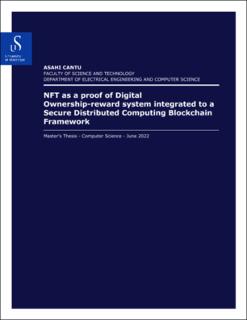| dc.description.abstract | Today, the global economy is dependent on the Internet and computational resources. Although they are tightly interconnected, it is difficult to evaluate their degree of interdependence. Keeping up with the pace of technology can be a challenging task, mainly when updating the hardware and software infrastructure. Every day, corporations and governments are faced with this issue; most have been victims of cyber attacks, security breaches, and data leaks. The consequences are significant in monetary losses; damage remediation is unattainable, even impossible, in certain circumstances. The repercussions might include reputational damage, legal responsibility, and threats to national security (when attacks are carried out against critical infrastructures to control the resources of a country), to name a few. Similarly, data has become such an integral part of many industries that it is one of the most critical targets for attackers that often is encrypted by ransomware, stolen, or corrupted. Without data, many companies are not be able to continue operating as they do. The combination of all these factors complicates the ability of organizations to cooperate, trust, and share information in efforts to research and develop solutions for industry and government. A promising technology can assist in significantly reducing the damage caused by the security threats outlined above: Blockchain technology has proven to be one of the most promising inventions of the twenty-first century for transmitting and protecting information while offering high reliability and availability, low exposure to attacks, protected encrypted data, and accessible to the entities willing to participate. Blockchain enabled the possibility to embed immutable data and compiled source code known as ‘smart contract’ where certain rules can be programmed to create business workflows. This thesis report proposes a Blockchain-based infrastructure solution provided by ”Hyperledger Fabric” technology for companies to securely transmit and share information using the latest encryption and data storage technologies operating on the model of distributed systems and smart contracts. By presenting unique digital assets as Non-Fungible Tokens (NFT), the infrastructure is able to trust the integrity of the data, while protecting it from counterfeiting. Through the use of a Blockchain-based file storage system known as IPFS, and by connecting all the relevant elements together through a web-based application, it is possible to demonstrate that the implementation of such systems is feasible, highly scalable and a useful tool that many organizations can utilize to create new work systems and workflows for digital asset management. | |
